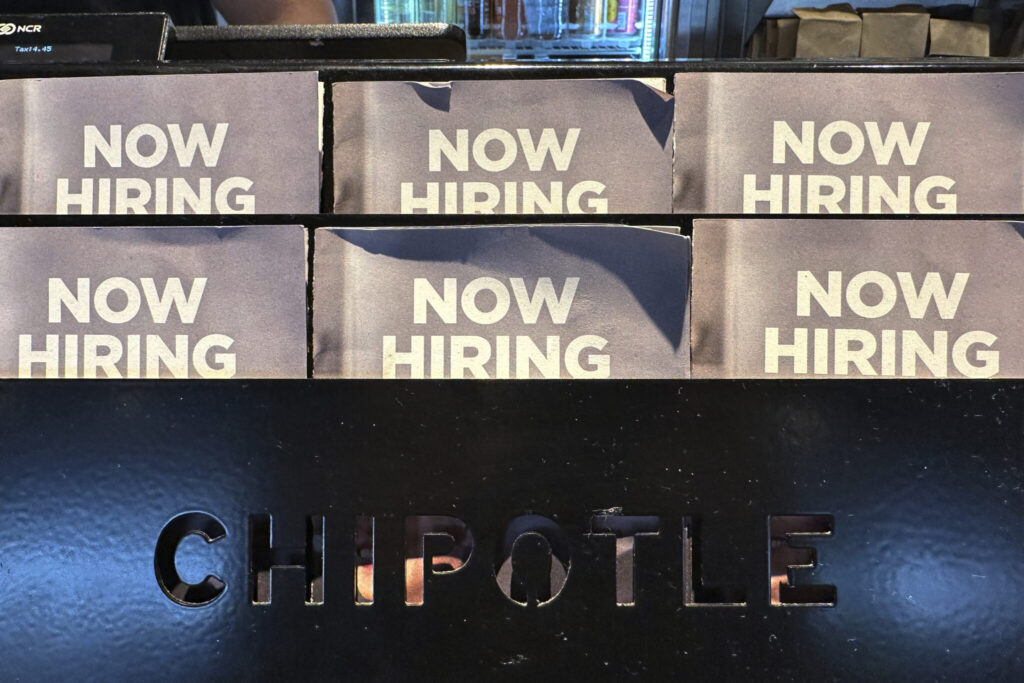Jobless claims/ unemployment benefits/ Federal Reserve/ labor market/ economic policy/ WASHINGTON/ Newslooks/ J. Mansour/ Morning Edition/ The U.S. Labor Department reported a drop in weekly unemployment benefit applications to 213,000, nearing a seven-month low. However, continuing claims climbed to 1.91 million, the highest in three years, suggesting challenges for job seekers. The Federal Reserve remains cautious, balancing interest rate cuts with efforts to support the job market amid strong economic conditions.
US Jobless Benefits Fall, but Continued Claims Climb: Quick Looks
- New Claims Decline: Weekly applications for unemployment benefits fell by 6,000 to 213,000, staying near a seven-month low.
- Continuing Claims Spike: Americans receiving ongoing benefits rose by 36,000 to 1.91 million, the most in three years.
- Economic Context: The Federal Reserve’s focus shifts from taming inflation to supporting the labor market, with fewer rate cuts anticipated in 2025.
- Job Market Trends: Demand for workers remains steady but shows signs of cooling, with fewer new job opportunities reported.
- Inflation Update: Inflation continues to recede, nearing the Fed’s 2% target, influencing policy decisions.
US Jobless Claims Drop to 213,000, Near Seven-Month Lows
Deep Look
Weekly unemployment claims in the U.S. fell to 213,000 last week, a decline of 6,000, as jobless applications remained near their lowest levels in seven months, according to Labor Department data released Thursday.
However, the number of continuing claims—representing Americans collecting unemployment benefits—rose by 36,000 to 1.91 million for the week ending Nov. 9. This figure is the highest in three years and signals difficulties for some job seekers in re-entering the workforce, even as the economy shows resilience.
The four-week moving average of weekly claims, which smooths out fluctuations, also fell to 217,750, indicating overall stability in the job market.
Mixed Signals in the Labor Market
While the low number of new claims indicates a healthy labor market, the increase in continuing claims suggests that some workers are struggling to find new employment. Economists interpret this as a sign that demand for workers may be tapering off, even though hiring remains steady in many sectors.
This dichotomy reflects the Federal Reserve’s challenge: balancing efforts to reduce inflation without triggering a recession.
Fed Policy and Economic Growth
In response to a slowing job market and cooling consumer prices, the Federal Reserve reduced its benchmark interest rate by half a percentage point in September and by a quarter-point in November. These marked the first rate cuts in four years after aggressive hikes between 2022 and 2023 pushed rates to 5.3%, a two-decade high.
Fed Chair Jerome Powell recently highlighted the progress made in taming inflation, which is now nearing the central bank’s 2% target. However, Powell and other officials have signaled a more cautious approach to future rate cuts, influenced by strong economic reports and policy proposals from President-elect Donald Trump.
“The Fed is trying to orchestrate a rare soft landing—bringing inflation down while keeping the economy out of a recession,” said a senior economist.
Labor Market Cooling
The U.S. job market, which added over 818,000 fewer jobs than initially reported between April 2023 and March 2024, continues to show signs of deceleration.
Applications for jobless benefits averaged 213,000 weekly during the first four months of 2024 but rose to 250,000 by late July. October saw the addition of only 12,000 jobs, a figure affected by temporary disruptions like strikes and hurricanes.
Inflation and Economic Indicators
Inflation, which had been a significant concern, has steadily declined over the past two years. A key inflation gauge fell to its lowest level in three-and-a-half years in October, giving the Federal Reserve room to adjust its monetary policy.
The Fed’s actions are influenced by the robust U.S. economy, which has remained resilient despite global economic challenges. However, the recent rise in continuing claims and mixed job data suggest that a full recovery may take more time.
Outlook
The labor market’s current trajectory—low new claims paired with rising continuing claims—points to a potential slowdown in hiring. Economists are watching closely to see how the Federal Reserve balances its dual mandate of controlling inflation and supporting employment as it navigates 2025.







